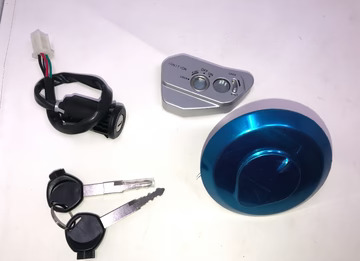Sneezing. Itchy eyes. Congestion. Most of us chalk up these symptoms to pollen, weather changes, or the usual springtime suspects. But what if your allergies aren’t coming from outside your home—but from what’s living inside it?
In many cases, homeowners experience allergic reactions that seem seasonal but persist beyond the expected window—or get worse indoors. While pollen and mold are common irritants, certain pests can also trigger allergy-like symptoms, especially when infestations go unnoticed.
Understanding the differences between typical environmental allergies and reactions caused by pests can help you identify the true cause—and respond accordingly.
If your symptoms don’t improve after spending time indoors, or actually get worse in specific rooms, it’s time to think beyond nature.
Here are common indoor symptoms that overlap with both allergies and pest-related triggers:
Chronic sneezing or coughing
Nasal congestion and sinus pressure
Skin rashes or red, itchy bumps
Watery or itchy eyes
Headaches, especially in confined spaces
Trouble sleeping or unexplained restlessness
While these may resemble pollen allergies, they can also be signs that something else is affecting your indoor air or skin—such as dust mites, cockroach droppings, or exposure to bed bugs.
Let’s look at the usual suspects hiding behind the curtain of “just allergies.”
These microscopic pests thrive in warm, humid environments—especially in bedding, carpeting, and upholstery. Their waste and shed body parts are potent allergens.
What to watch for:
Worsening symptoms at night or upon waking
Relief when staying somewhere else
Increased reaction in cluttered or poorly ventilated rooms
A thorough pest control in Colts Neck can determine if dust mites are contributing to your discomfort, particularly in older mattresses or heavy-fabric furnishings.
Far from just being a visual nuisance, cockroach droppings and shed skins contain proteins that are known allergens. They can trigger asthma, particularly in children.
Warning signs:
Allergy symptoms near kitchens or under sinks
Visible droppings, egg cases, or grease trails
Musty or oily odor in enclosed spaces
Cockroach allergens tend to accumulate in ductwork and under appliances, where they’re easily circulated through air systems.
Mice and rats produce dander and urine that can evaporate into the air, especially in attics, walls, or basements.
Clues to look for:
Noises behind walls, especially at night
Pet food disappearing unexpectedly
Allergies that improve when windows are open but worsen indoors
Rodent allergens are particularly dangerous because they’re often airborne and not visible until the infestation is advanced.
While not traditionally airborne, bed bugs can trigger allergic reactions in sensitive individuals. Their bites may resemble hives or rashes, and in some cases, skin reactions are delayed—leading to confusion with eczema or contact dermatitis.
Bed bug warning signs:
Bites in clusters, often on exposed skin like arms or neck
Blood spots or black dots on sheets
Disrupted sleep or psychological discomfort in bedrooms
Agile Pest Control often receives calls from clients convinced they have “skin allergies,” only to find bed bugs in the headboard or box spring.
Here are some practical ways to distinguish between seasonal/environmental allergies and pest-related issues:
If symptoms follow patterns tied to spaces, furniture, or specific times of day, it’s worth investigating whether pests are playing a hidden role.
The tipping point between "this is just allergies" and "this needs attention" comes down to duration, pattern, and visibility.
You should consider contacting a professional when:
Symptoms persist for more than a few weeks without relief
Over-the-counter allergy medications stop working
Bites, spots, or physical evidence of pests appear
Symptoms intensify in specific rooms or after cleaning
Agile Pest Control technicians are trained to assess indoor environments with sensitivity toward both physical pest activity and health-related concerns. Their inspection processes often uncover subtle infestations that may go unnoticed otherwise.
Pest management isn’t just about eliminating bugs—it’s about creating a healthier, more livable home. That includes:
Reducing airborne allergens
Identifying hidden moisture or ventilation issues
Addressing insulation or duct contamination from rodents
Providing post-treatment cleaning guidelines
In some homes, indoor air quality improves dramatically after pest-related allergens are removed from vents, fabrics, or nesting areas.
While a professional assessment is always best for confirmed infestations, there are also ways to reduce both allergens and pest attractants at home:
Use mattress covers that block dust mites
Wash bedding weekly in hot water
Seal food containers and clean crumbs promptly
Declutter storage areas and reduce fabric piles
Use HEPA air filters and vacuum often
Inspect secondhand furniture before bringing it indoors
These actions support both respiratory health and active pest control efforts, making your home less appealing to bugs and better for your body.
Sometimes, the sneeze isn’t just a sneeze.
What feels like seasonal allergies might actually be your home trying to tell you something. Allergens caused by pests are real, and the overlap in symptoms can cause confusion, delays, and frustration. But with a bit of observation—and the right help—you can get clarity.
Agile Pest Control encourages homeowners to consider all possibilities when unexplained symptoms persist. You shouldn’t have to live in discomfort, guessing between allergies and infestation.
Because in the end, whether it's pollen or bed bugs, the answer lies in knowing what to look for—and acting on it before the problem grows.




Want to add a comment?